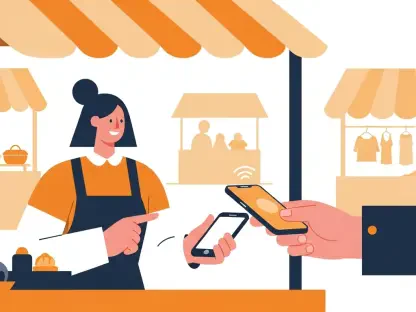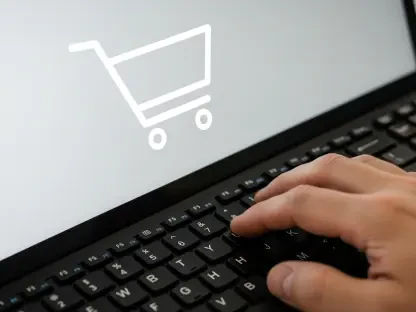Let me introduce Zainab Hussain, a seasoned e-commerce strategist with a wealth of experience in customer engagement and operations management. With her finger on the pulse of online retail trends, Zainab has helped numerous brands navigate the ever-changing digital landscape. Today, we’re diving into the latest insights on consumer spending plans for 2026, the erosion of brand loyalty, the rising influence of reviews, and the role of AI tools in shaping shopping behavior. Join us as we explore what’s driving these shifts and what brands can do to stay ahead in this competitive space.
How do you interpret the shift in consumer confidence, with only 39% of shoppers planning to spend less in 2026 compared to 69% last year?
I think this shift signals a growing sense of economic stability for many consumers. Last year, uncertainty—whether from inflation or global events—made people tighten their belts. Now, with a more positive outlook, shoppers seem to feel more secure in their financial situations. Additionally, there’s a cultural element at play; people are prioritizing experiences and quality over just cutting costs. They’re willing to invest in things that bring value or joy, which is a big departure from the caution we saw previously.
Looking at the 30% of shoppers expecting to increase spending in 2026, which categories or products do you think will benefit the most?
I’d bet on categories like technology, wellness, and sustainable goods seeing the biggest uptick. Tech gadgets, especially those tied to smart homes or personal productivity, are always in demand as innovation rolls out. Wellness products—think fitness gear or mental health apps—are also gaining traction as people focus on self-care. And sustainability is huge; consumers are gravitating toward eco-friendly brands, even if they cost more. These areas align with broader lifestyle trends, especially among younger shoppers who are driving much of this spending growth.
Some shoppers attribute their higher spending to rising prices. How much of this do you think is tied to inflation versus a genuine desire to spend more?
It’s a mix, but I’d say inflation still plays a significant role. Prices for essentials haven’t exactly stabilized, so part of the increase is just keeping up with the cost of living. However, there’s also a genuine willingness to spend more on premium or trusted products. Shoppers are becoming savvier—they’ll splurge if they see value, like better quality or a brand they trust. So, while inflation forces some of the higher spend, there’s definitely an element of choice in prioritizing meaningful purchases over just the cheapest option.
Why do you think Millennials and Gen Z are showing more optimism about spending compared to Baby Boomers in 2026?
Millennials and Gen Z are often in life stages where they’re building careers, starting families, or investing in their futures, so they’re more inclined to spend on things that support those goals—like tech, home goods, or experiences. They’ve also grown up in a digital, consumer-driven world where spending is tied to identity and trends. Baby Boomers, on the other hand, are often at a point of financial consolidation, focusing on savings or fixed budgets. Younger generations also tend to be more adaptable to economic shifts, which might fuel their optimism.
Half of Baby Boomers plan to maintain their spending levels. Do you see this as caution or simply a reflection of financial stability?
I lean toward financial stability for many in this group. Baby Boomers are often in a phase where their income and expenses are more predictable—many are retired or close to it, with established habits. They’re less swayed by trends or impulse buys compared to younger generations. That said, there’s likely an element of caution too, especially with concerns about healthcare costs or economic uncertainty. It’s less about fear and more about a practical mindset of sticking to what works for them financially.
With 72% of shoppers switching brands in the past year, what’s making it so easy for consumers to try something new?
The digital marketplace has lowered the barriers to switching. Online platforms make it effortless to discover alternatives through comparison tools, reviews, and personalized recommendations. Price transparency is another factor—shoppers can instantly see if a competitor offers a better deal. Plus, the abundance of information, like user feedback, reduces the risk of trying a new brand. It’s no longer about sticking with the familiar; it’s about who delivers the best value or experience at that moment.
Since Millennials and Gen Z are leading the brand-switching trend, do you think this is driven by a desire for variety or dissatisfaction with their usual brands?
It’s more about variety and curiosity than outright dissatisfaction. These generations are digital natives—they’re used to endless options and crave novelty, whether it’s a trendy new product or a brand with a compelling story. Social media amplifies this by constantly showcasing alternatives. That said, dissatisfaction can play a role, especially if a go-to brand fails on price, quality, or values like sustainability. For them, switching isn’t a betrayal; it’s just exploring what’s out there.
How can brands rebuild trust or loyalty in an environment where so many shoppers are willing to switch?
Brands need to focus on consistency and transparency. Delivering on promises—whether it’s product quality, customer service, or ethical practices—builds trust over time. Engaging directly with customers through personalized experiences or community-building can also create emotional connections that go beyond price. Encouraging and showcasing authentic reviews is crucial too; shoppers trust peer feedback more than marketing. Finally, brands should address pain points like out-of-stock issues head-on, as availability often dictates loyalty in the moment.
Why have ratings and reviews become more important than price for 32% of shoppers at the point of purchase?
Reviews have become a proxy for trust in a crowded digital space. When you can’t touch or see a product in person, feedback from other buyers acts as a safety net. It’s not just about whether a product works—it’s about the entire experience, from shipping to customer support. Price matters, but if reviews signal a bad outcome, shoppers will hesitate, even at a discount. It’s a shift toward valuing real-world validation over just the lowest cost, especially as people become more discerning.
With 63% of shoppers leaving reviews in the past year, how can brands encourage more positive feedback to stand out online?
First, brands need to make the review process seamless—send follow-up emails or prompts right after purchase with easy links to leave feedback. Offering small incentives, like a discount on a future purchase, can motivate customers without feeling forced. Most importantly, they should deliver exceptional experiences; happy customers are more likely to share positive thoughts. Responding to reviews, both good and bad, also shows a brand cares, which can encourage more people to contribute. It’s about fostering a dialogue, not just collecting stars.
Given that positive reviews outnumber negative ones nearly 2 to 1, do you think this creates a trustworthy environment for shoppers, or does it breed skepticism?
It can go either way, depending on the shopper. For many, the dominance of positive reviews builds confidence—it suggests most experiences are good, which is reassuring. However, some might question if the feedback is genuine, especially if it feels overly glowing or lacks detail. There’s a growing awareness of fake reviews, so brands need to ensure authenticity by encouraging detailed, balanced feedback. Transparency about how reviews are collected helps too. Overall, the positive tilt is a net benefit if it reflects real customer sentiment.
What is your forecast for the future of brand loyalty in the digital marketplace over the next few years?
I expect brand loyalty to remain fluid, with consumers continuing to prioritize value, trust, and convenience over sticking with one name. The digital shelf will only get more competitive as AI tools and reviews amplify discoverability of new brands. Loyalty might evolve into something more situational—shoppers could be loyal to a brand for specific products or moments rather than across the board. Brands that adapt by focusing on trust signals, like authentic feedback and consistent experiences, will have the best shot at retaining customers, but it’ll be an ongoing battle to win each purchase.









